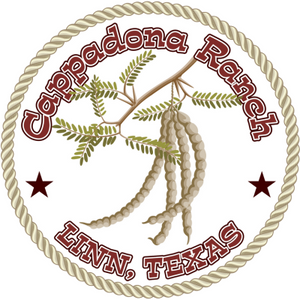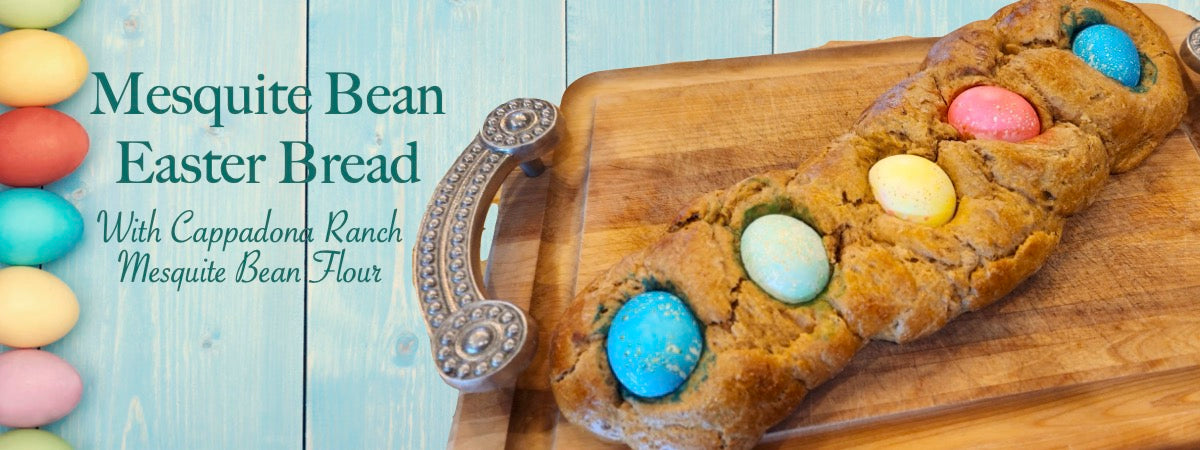So good when served with baked ham, Easter bread is a must-add to any spring menu: drizzled with a sweet glaze and topped with colorful eggs and sprinkles, it can be a delicious dessert and a stunning centerpiece all rolled into one! Easter bread is a subtly sweet, yeasted dough adorned with brightly colored eggs baked right into the bread. It’s a whimsical baking project your kids will love to get involved in every year.
Where did this beautiful bread come from?
Easter bread is one of the oldest Easter food traditions that hail from Italy and Greece as far back as the 12th century. The bread varies in its symbolism based on the shape — a wreath is believed to represent the crown of thorns whereas a three-stranded braid symbolizes the Holy Trinity. Although the exact origin is uncertain, one thing is for sure: Easter Bread is an easy, festive addition to your Easter spread.
What is Easter bread made of?
This bread is made from a sweetened, yeasted dough, similar to a brioche. It does take some time to rise (around 1 hr), but while waiting for it to rise and double in size is the perfect time to dye your eggs!
Can you eat the eggs on the top of the Easter bread?
Yes, you can eat the eggs that are baked on the top of the Easter bread. For this recipe, you dye raw eggs and then tuck them into the dough; they'll bake to a nice soft-set in the oven. You can also use dyed hard-boiled eggs, but they'll be a bit overcooked and merely decorative after baking. Regardless, make sure the dyed eggs are dry and at room temperature before baking to help keep the dye from bleeding onto the bread. Don't worry, some bleeding is a bit inevitable, but you can cover that part with glaze and add lots of sprinkles!
What's the secret to a beautiful Easter bread?
The secret to a beautiful Easter bread is to respect the yeast! Many folks are intimidated by yeasted breads, but they're really quite easy so long as you keep the water and milk from getting too hot — high heat kills the yeast. Aim for around 110°; it's well in the safe zone, but warm enough to get that yeast activated and bubbly, guaranteeing a nice rise. For a confidence boost, check the temperature of your liquids using a thermometer.
Decorating the bread.
Never dyed eggs before? This is the most adorable excuse to give it a try. All you need are distilled white vinegar and food coloring to make your colorful eggs. We went with pink and blue for a pastel look, but feel free to choose whatever colors your heart desires. Another reminder: The eggs are meant for decoration only—do not eat!
Want to make everyone really "HOPPY"? Add a little Easter Bunny Magic by drizzling our popular Cappadona Ranch Mesquite Bean Jelly over top right before serving.
Master Sweet Dough
Ingredients:
- 2/3 cup whole milk
- 5 tablespoons sugar, divided
- 1 ¾ teaspoons active dry yeast
- 2 large eggs, room temperature
- 2 cups unbleached all purpose flour
- ¾ cup Cappadona Ranch Mesquite Bean Flour
- 1 teasp00n kosher salt
- ½ cup (1 stick) unsalted butter, cut into 1-inch pieces, room temperature, plus ½ tablespoon, melted
Preparation:
STAND MIXER METHOD
Step 1
Heat milk in a small saucepan over medium heat or in a microwave until an instant-read thermometer registers 110°–115°. Transfer milk to a 2-cup measuring cup; stir in 1 Tbsp. sugar. Sprinkle yeast over milk and whisk to blend. Let sit until yeast is foamy, about 5 minutes. Add eggs; whisk until smooth.
Step 2
Combine remaining 4 Tbsp. sugar, flours, and salt in the bowl of a stand mixer fitted with a dough hook. Add milk mixture. With mixer running, add 1/2 cup room-temperature butter, 1 piece at a time, blending well between additions. Mix on medium speed for 1 minute. Knead on medium-high speed until dough is soft and silky, about 5 minutes.
Step 3
Brush a medium bowl with some melted butter; place dough in bowl. Brush top of dough with remaining melted butter; cover with plastic wrap. DO AHEAD: Can be made 1 day ahead. Cover with plastic; chill.
Step 4
Let dough rise in a warm, draft-free area until doubled in size, 1–1 1/2 hours (or 2–2 1/2 hours if dough has been refrigerated).
Easter Bread Preparation
- Step 1
Place 5 or 6 eggs in a medium pot. Pour in cold water to cover by 1 inch and bring to a boil over medium-high heat. Remove from heat, cover pot, and let stand for 10 minutes. Transfer eggs to a medium bowl of ice water; let cool completely. Do Not Eat if you bake in the hard boiled eggs.
Step 2
If desired, color eggs according to food-coloring package directions, or check out our recipes for dying your eggs naturally. Transfer eggs to paper towels to dry. DO AHEAD: Eggs can be dyed up to 1 week ahead. Cover and chill.
Step 3
Line a large baking sheet with parchment paper. With heavily floured hands and knuckles, punch down dough. Divide into 3 equal pieces. Roll each piece on a heavily floured surface into a 16-inch-long rope with tapered ends. The dough will be VERY sticky. Cover surface of dough with flour to keep it off your hands. (If dough begins to bounce back, cover with a kitchen towel and let rest for 10 minutes to allow dough to relax.)
Step 4
Arrange ropes side by side lengthwise on prepared sheet. Pinch top ends together. Braid dough. Pinch bottom ends together to secure (braided loaf will be about 12 inches long). Tuck dyed eggs between braids, spacing evenly. Loosely cover with plastic wrap or a kitchen towel. Let rise in a warm, draft-free area until puffed but not doubled in size, 45–50 minutes.
Step 5
Arrange a rack in middle of oven; preheat to 375°. Whisk remaining egg with 2 tsp. warm water in a small bowl. Avoiding dyed eggs, brush dough all over with egg wash. Bake until bread is golden and an instant-read thermometer inserted into center of loaf registers 190°, 20–25 minutes. Let cool on a wire rack. Serve warm or at room temperature. DO AHEAD: Can be made 8 hours ahead. Let cool completely and store airtight at room temperature.





